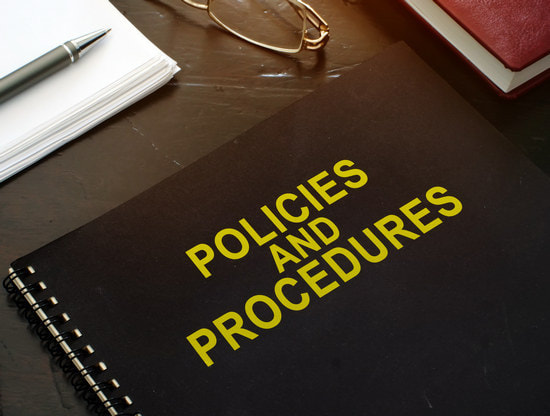
We often work with business owners who need written accounting policies to guide the preparation of their financial reports. Sometimes they need this information to provide it to key stakeholders externally because it is required by lenders, investors, or partners.

Other times they are more internally motivated, looking for ways to improve and standardize the handling of their financial data to facilitate growth.
Either way, many businesses come to us looking for a set of generic standard accounting policies and procedures that they can just copy. We understand the rationale here. Why reinvent the wheel if you can just take what someone else is already using it and tweak it to fit your company’s needs? And in all honesty, there is nothing wrong with modifying an already existing manual if you know why your business needs formalized accounting policies. However, simply creating accounting policies based on someone else’s business practices without an understanding of why you are doing it and what kind of outcome you are looking for is not the right strategy.
Before you begin looking for an accounting policies and procedures template to customize, it is important to understand what an accounting policy and procedures manual is, what it should accomplish, and how to go about writing a good one. With this knowledge you will have the savvy to create something that is beneficial to your company both internally and externally.
What are Accounting Policies and Procedures?
People often get accounting principles and accounting policies confused. Accounting principles are the accounting rules that a company uses, while accounting policies are the procedures that a company uses when following those rules. Essentially, accounting polices explain how a company adheres to the principles it has set forth. As such, accounting policies will vary by company, while accounting principles are more standardized among business types (which is where you get Generally Accepted Accounting Principles, or GAAP).
Accounting Strategies to Meet Business Goals
What are the benefits of accounting policies and procedures? They help organizations achieve their short-term and long-term goals. How? Well, because accounting policies are not as rigid as accounting principles, they can be molded to fit individual businesses across activities like asset depreciation, R&D cost allocation, and inventory valuation. Some companies’ accounting policies will be more aggressive, while others will be more conservative.
As long as accounting policies adhere to GAAP, their flexibility provides a legal way for companies to present their financial reports in a more positive light. By establishing ways to handle accounting activities in a way that is advantageous to their business model, companies can subsequently improve their external perception. As an example, using FIFO (first in first out) as an inventory costing method will reduce your COGS (cost of goods sold) when inventory costs are rising. So, this type of accounting policy decision can be crucial for a manufacturer who is experiencing steadily rising parts costs and is trying to keep their reported earnings as stable as possible to secure additional funding.
Internally, establishing accounting policies and procedures improves reporting accuracy, cash flow management, and strategic planning. Additionally, formalized accounting policies increase accountability to reduce the risk of fraud, especially during growth periods when new personnel is being hired and the volume of financial activities is increasing.